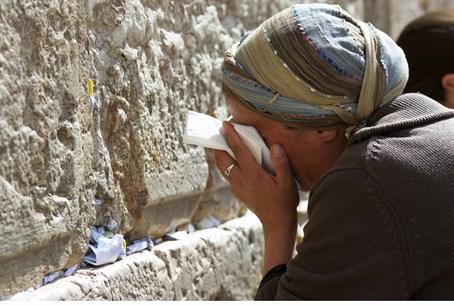
Mourning at the Kotel on Tisha B’Av
Rabbi Ashlag teaches that in order to mourn we actually have to know what we are mourning for. The significance of the Temple when it stood in Jerusalem was the fact that it was a tangible manifestation of God’s light in the world. On its destruction , the world went dark.
But God is good and does good at all times, therefore even in the darkness , there exists a great light. and that is the fulfillment of the Biblical command:
“Make for Me a sanctuary that I will dwell within them.”. ( Exodus 22: 8)
Inside each of us is a soul. But do we experience her? The greatest woe of destruction is not even being aware that anything is destroyed. Tisha B’Av draws our attention to look at where in our lives we are not giving our soul a voice, where we are allowing that sill small vice to be drowned out the demands of the ego. Where we are acting out of habits conscious or unconscious that draw us away form the manifestation of the light of God in our own lives now. Tisha b’ Av may have started in history but it ‘s relevance is now.
Click to listen to the full podcast
Post in loving memory of Feiga Bat Shmuel and Rivkah z”l









